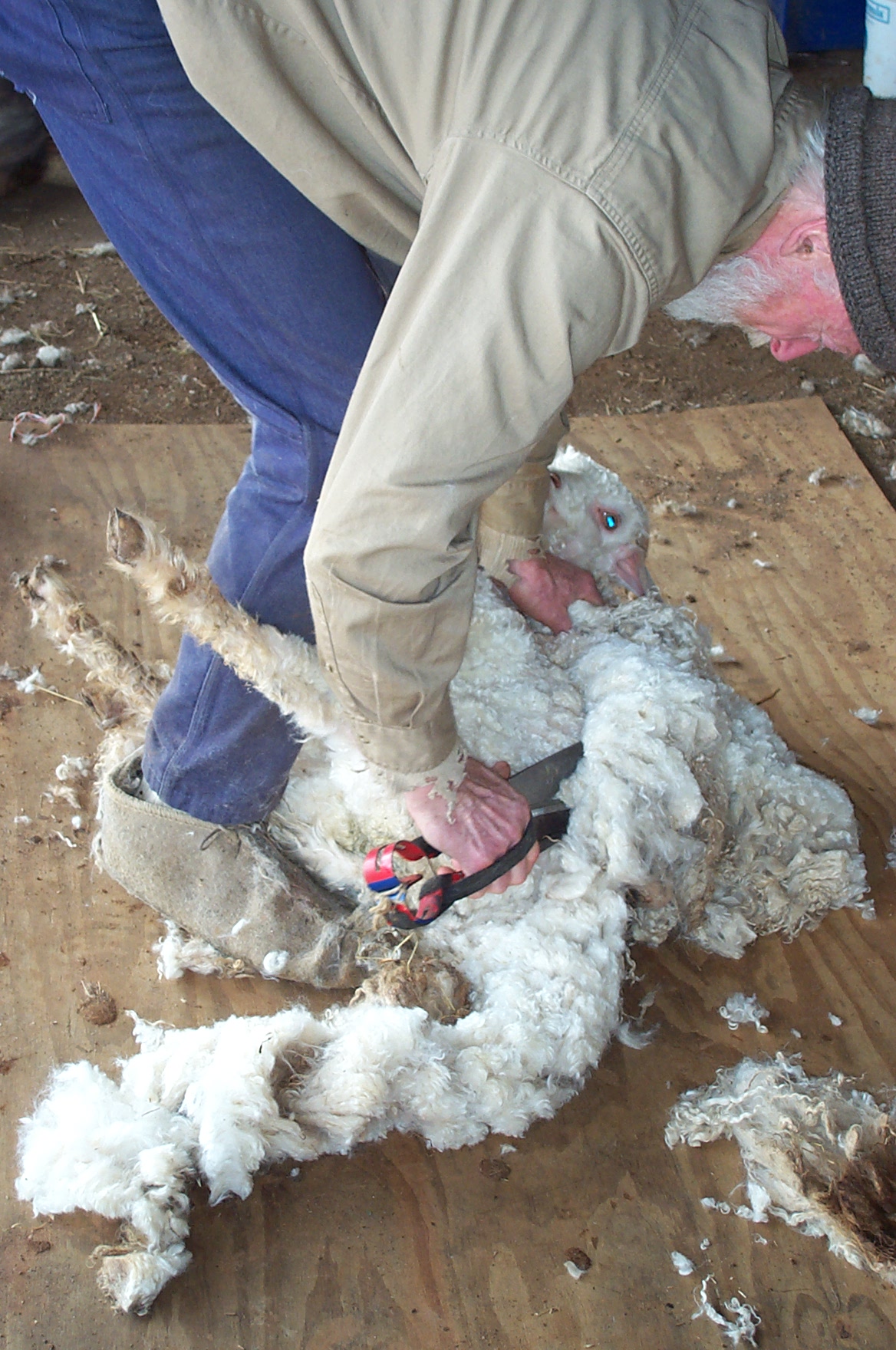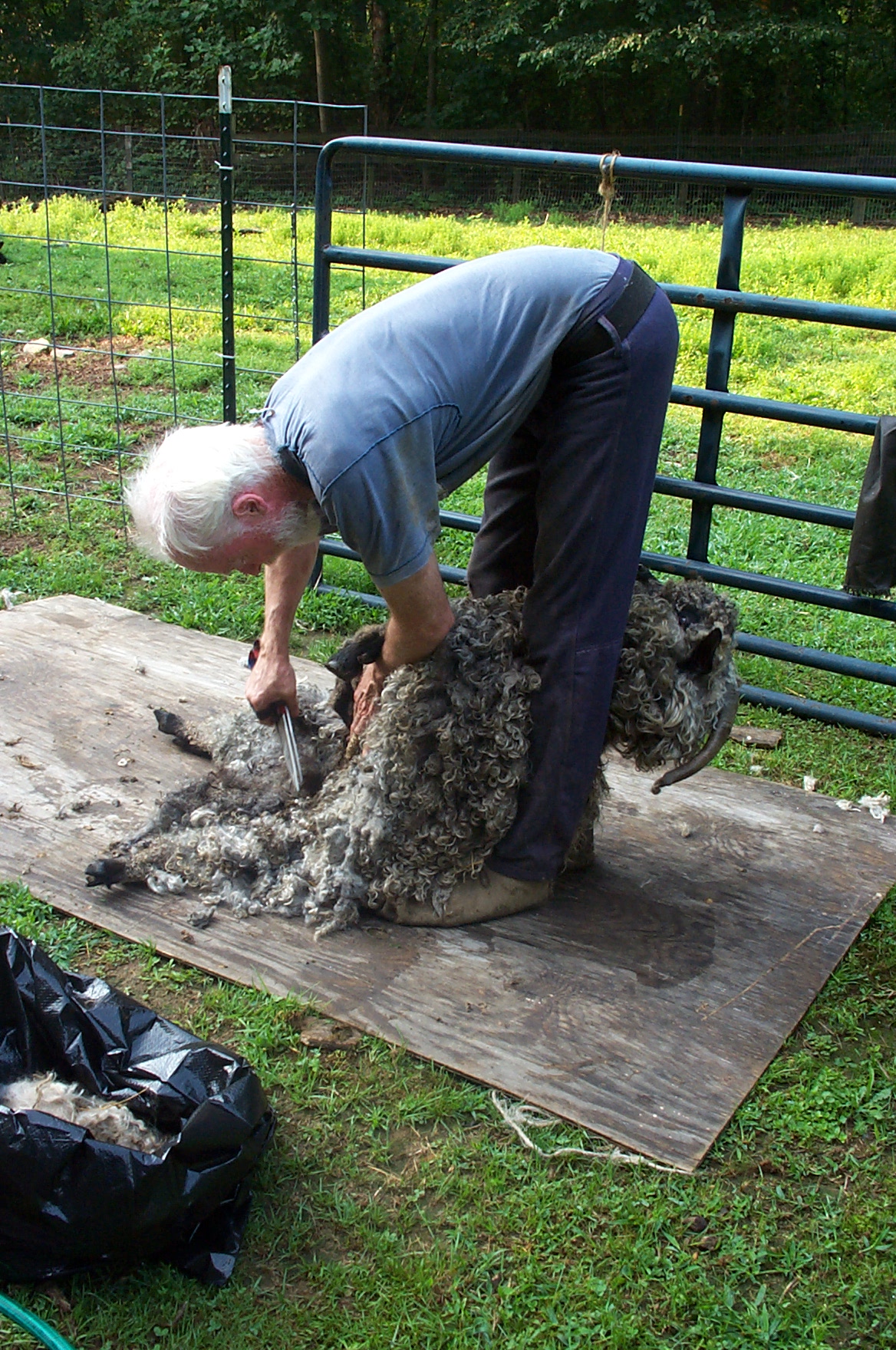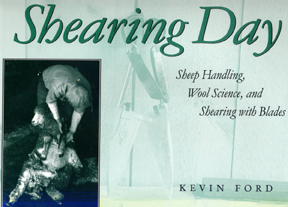|
Shearing Day at Giant Cricket Farm Marshall, VA |
 |
|
Shearing Day at Giant Cricket Farm Marshall, VA |
 |
The principle behind shearing is simple - an animal has grown hair that needs to be cut short again. Shearing involves using either electric clippers or hand shears (large cross-cut blades) to cut the hair off of the animal's entire body. Think of it as a whole-goat, very short, semi-annual haircut.
Angora goats grow hair continually for their entire lives. A healthy angora goat can grow over 12 inches of hair a year. That hair can range in type and style from tight corkscrew curls to long waves, and can be very greasy or almost dry, depending on the genetic heritage of the goat and conditions in which the goat grew its hair. Angora goats are sheared twice a year, usually in late winter and late summer. There are two reasons for shearing twice a year: usability of the hair, and comfort of the animal.
|
The longer the hair stays on the goat, the more dirt and tangles are in it. Also, once the hair has passed a certain length, the goat will have trouble seeing, will be very warm regardless of weather, and will have issues eliminating body waste without getting it caught in hair. "Wool blind" is the term for an animal with so much hair on its face that it can't see. The picture of Loki (at right) shows that he has restricted vision with 5 months of hair growth. |
 |
 |
In order to support both safety of the participants (goats and humans) and the cleanliness of the fleeces, the shearing area should be clean and flat. Because of the hills and rocks at my house, we usually stage the shearing on a 4'x8' sheet of plywood. This allows me to collect and sweep up the hair between shearings, and gives the shearer solid footing for doing the work. |
|
|
|
 |
The actual act of shearing a goat is very straightforward, with the caveat that angora goats have very loose skin, especially under their legs and across their necks. Regardless of the shearing technique used, care must be taken to not cut the goat's skin. Many shearers will manipulate the animal in various positions on the ground in order to have the best access to each area being sheared. The advantage of this technique is that the shearer can draw the skin in that area tight across the goat's body in order to avoid accidentally cutting into a fold of skin. Additionally, some people use shearing stands to control very large or flighty animals during the process. |
|
|
|
  |
When you look at the photos of angora shearing, particularly hand-shearing, note that the shearer has to be able to bend and twist his or her own body as well as that of the animal. Some shearers take up yoga or other physical activity that helps them to maintain their backs and bodies in good condition for this kind of activity. The person in the photo to the left is Kevin Ford, a well-known handshearer from Pennsylvania. Kevin has taught innumerable classes on handshearing as well as written a book on handshearing. Shearing Day was published in 1999. |
|
|
|
|
Shearing the goats also reveals the body conditions of the animals as well as some of the color patterns that are otherwise masked by the longer hair. Some examples of this are: Jared's star on his forehead and the partial belt of white, the star on Dru's forehead, and the black mantle on Sashimi's shoulders. The photos at right show Anna's forehead star before and after shearing. |
  |